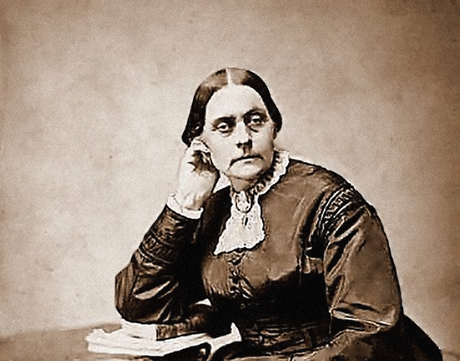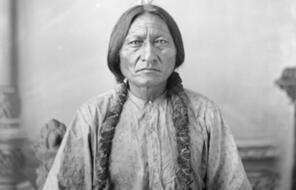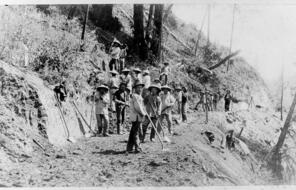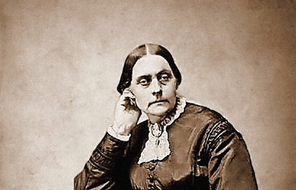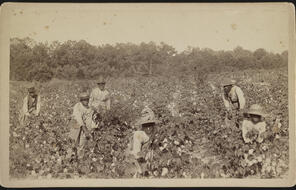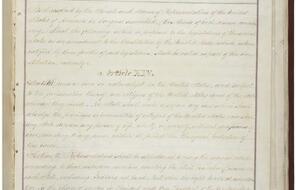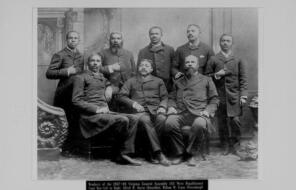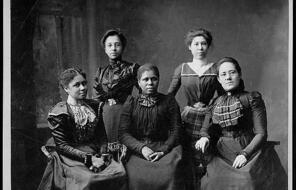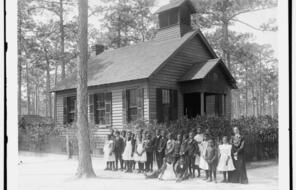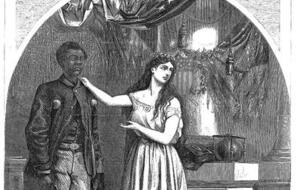While the rights of African Americans were greatly expanded under Radical Reconstruction, many forms of discrimination remained unregulated by law. Additionally, the limited rights of many Americans—including women, immigrants, workers, and Native Americans—remained untouched by Radical Reconstruction in the 1860s and 1870s. Yet the spirit of equality, newly enshrined in the Constitution by the Fourteenth Amendment, prompted many of these Americans to demand new rights. This lesson provides students with a survey of American voices demanding to be included, each in their own way, in the universe of obligation of the nation that emerged from the Civil War.
Some of these voices envision an equal society, while others express a belief that some Americans deserve more rights than others. Some of these voices envision an integrated society, while others express a desire to live apart, and in the case of Native Americans to have their sovereignty respected by the US government and people. By learning about these demands, students might consider some of the challenges of democracy:
- How can a democracy balance the competing demands of its inhabitants for rights and power?
- How can it achieve equality when not all of its inhabitants believe in equality?
- How can it achieve a harmonious society when not all of its inhabitants wish to live together?
While the histories of each of the groups represented in this lesson deserve extended study in a course on American history, the goal of this lesson is to show how the revolutionary changes that Radical Reconstruction brought to Southern society invigorated the desires of Americans everywhere to have their voices heard and their rights respected.
The following paragraphs provide context for the groups that are represented in this lesson.
African Americans: While Radical Reconstruction legislation and amendments dramatically changed the lives of African Americans, many forms of discrimination based on race were not explicitly forbidden by law. In 1874, Congress debated a new civil rights bill, written by Republican senator Charles Sumner from Massachusetts, which banned racial discrimination in public accommodation and transportation. The bill became law in 1875, and it was the last piece of Reconstruction legislation passed by Congress. It was declared unconstitutional by the Supreme Court in the Civil Rights Cases of 1883.
Women: Women’s rights advocates had a long history as part of the coalition demanding the abolition of slavery, but after the Thirteenth Amendment was ratified, some women and African Americans diverged in their efforts for equality (refer to Lesson 8 for more information about this conflict). As compromises in the Fourteenth and Fifteenth Amendments left women’s suffrage off the agenda, some women’s rights advocates, such as Frances Ellen Watkins Harper and Lucy Stone, continued to support the amendments, while others, notably Susan B. Anthony and Elizabeth Cady Stanton, strongly opposed them. Gage and Stone argued that any expansion of rights, even if inadequate in scope, ought to be supported because it would make society more democratic. Anthony and Stanton argued that women deserved the franchise before African Americans and other groups. Although women had not been extended the franchise, Anthony voted in the 1872 election anyway, and she was arrested for committing a crime. She was convicted and fined $100 for “the crime of having voted,” a common topic in her speeches thereafter.
Labor: The 1870s are known as the beginning of the Gilded Age (a term coined in 1873 by Mark Twain and fellow writer Charles Dudley Warner), a time of expanding industrialism, economic inequality, graft, and corruption. At the same time that the federal government continued to deny the provision of land to freedpeople in the South, it was granting free land to railroad corporations in the West. This policy facilitated the rapid expansion of railroads and the economic development of the West, but it also encouraged land speculation as corporations sold for enormous profit the land they were given for free. Workers across the country decried such policies that favored the wealthy and resulted in enormous economic inequality. The title of one pamphlet from the decade sums up this sentiment: “The Rich Are Growing Richer, While the Poor Are Growing Poorer.” American laborers began to organize into unions to demand higher wages, better working conditions, and government policies more favorable to workers. The ideas of socialism and communism also arrived in the United States from Europe in the 1870s, fueling the demands of some workers for economic equality. Labor groups such as the Workingmen’s Party of California not only demanded economic equality but also sought to exclude immigrants from employment, viewing them as competitors for jobs.
Immigration: After the Civil War, Congress passed laws to encourage immigration from Europe. According to Census Bureau statistics, between 1860 and 1880, the number of foreign-born Americans from Europe grew by 2 million, a 50% increase. During the same two decades, the number of foreign-born residents of the United States from China tripled, from roughly 35,000 in 1860 to nearly 105,000 in 1880. Chinese workers were crucial to the completion of the transcontinental railroad, and many others worked in manufacturing jobs. While Chinese immigrants represented less than 2% of the total immigrant population in the United States, some Americans, including members of the Workingmen’s Party of California, perceived them as a threat to jobs and economic security. By 1875, there was enough anti-Chinese sentiment to prompt Congress to pass the Page Act, the first law to limit immigration of groups considered “undesirable.” In 1882, the Chinese Exclusion Act further restricted Chinese immigration. It is in this context that a group of Chinese immigrants wrote to President Ulysses S. Grant in 1877 defending their value to American society and asking for protection from discrimination.
Policies toward Native Americans: The circumstances of Native Americans during Reconstruction were complex and frequently dire. The American government’s policies toward Native Americans at this time were the culmination of several centuries of oppression and what many scholars have labeled genocide. Westward expansion, including the extension of railroads, was the goal of national economic policy during the 1860s and 1870s. As a result, the United States confiscated the western lands of a variety of American Indian nations. The army was sent to battle the nations that resisted. Under President Grant’s American Indian policies, many Native Americans were encouraged (and often forced) to attend schools that would teach them how to assimilate into the culture of white America, while others were confined to reservations. In the excerpt included in this lesson, Sioux leader Sitting Bull responds to this policy by maintaining that all creatures have an equal right to inhabit the land. He pledges to fight if the Americans claim the land “for their own, and fence their neighbors away.”
